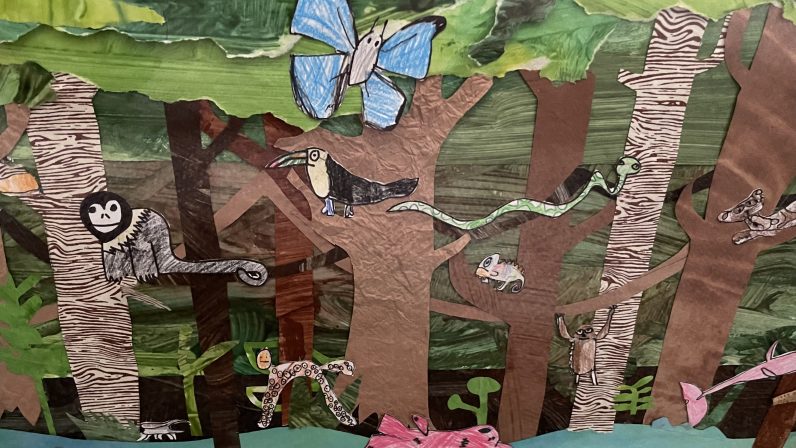On Thursday I was sitting under the loft in the 1st/2nd grade class with one of the first graders, finishing up the final touches of his published book about museums. Although we were highly focused on his book, I couldn’t help but be distracted by what was going on with the rest of the class. They were gathered on the floor with clipboards, pencils and a sheet for taking notes. Their teacher sat near the big screen TV mounted on the wall looking at slides of different animals from the Amazon rain forest. They paused to talk about what was interesting about each animal. The big screen also included suggested information for note taking. It was impressive how successful each child was with this approach. What was also impressive was the vocabulary they used.
The word that first drew my attention to the group was echolocation. Once I finished up with the student publishing his book, I decided to stick around to see where the conversation was going. I took a moment to look up echolocation and found this definition: “a physiological process for locating distant or invisible objects (such as prey) by sound waves reflected back to the emitter (such as a bat) from the objects.” I was reminded of a thought I’ve had over the years, that being a teacher is what’s made me a lifelong learner, and it’s given me the opportunity to curate a strong collection of random facts and information.
As the note taking lesson continued, there was a discussion of animals that were water repellent, such as the giant otter who has water-repellent fur and its ears and nostrils shut when submerged in water. When the animal each child had researched appeared on the screen, that child became the expert. They were able to fill in facts not included on the visual list with a confident voice. This part intrigued me, both the breadth of their knowledge, as well as their ownership. The level of ownership and engagement once again was loud and clear. The animal slides also inspired personal stories. When a manatee appeared on the screen, their teacher told a manatee story from her own travel adventures. A student shared his turtle snorkeling story from a trip to Hawaii.
In addition to learning new terms, such as echolocation, I also found out that the anaconda can eat prey whole, including an entire jaguar, and are the heaviest snake in the world (some can weigh up to 550 pounds). Another random fact to add to my collection! Seriously, I walked away from this conversation with an even deeper appreciation for the kind of learning that goes on at the Seed. Engagement was high, and kids of all different skill levels were successful at note taking practice. Most importantly, everyone was a part of a community dedicated to learning about some of the fascinating creatures sharing this planet with us.

